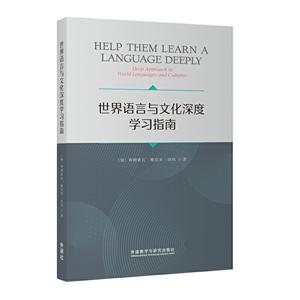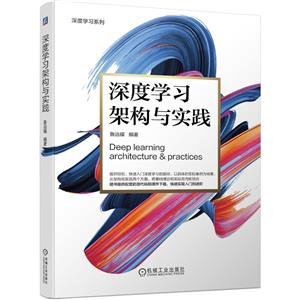
作者:FrancoisVictorToch
页数:420
出版社:外语教学与研究出版社
出版日期:2019
ISBN:9787513597753
电子书格式:pdf/epub/txt
内容简介
本书为引进版,主要介绍美国威斯康星大学麦迪逊分校Francois Victor Tochon(弗朗索瓦?维克多?托雄)教授的深度学习方法。深度学习方法是学习外语和文化很有效的方法之一,有助于语言教师引导学生了解和掌握更好、更有效的语言学习方法,提高语言技能,并加深对语言所反映的文化的理解。本书具有较高的学术价值和教学参考价值,值得引进。英语学习方法多种多样,然而传统的教学方法是静态设计,忽略课堂实际情况,理论与现实脱节,扼杀学生的创造力和自主性,忽视跨文化互动。例如,任务型教学法缺少文化社会因素,与现实脱钩,无法产生真正意义上的交流、沟通。而在Tochon教授的深度学习法中,学生成为课程的建设者、参与者,该法重整体认知,重意义,重创造,重过程,重反思,重与实践相结合。Tochon教授认为,教学法应该是基于实证组织者的动态框架设计,语言活动应该直接和实际交流相融,学习者应培养学习自主性,学校应灵活设置课程目标。而在信息技术的使用上,Tochon教授不主张仅在课堂中使用在线资源,而是主张面对面授课和在线学习交替进行,从而更好地利用科技资源,鼓励学生的学习自主性。教育要想变得有意义,需要学习者的自主课程与学术课程互相融合来实现。
作者简介
弗朗索瓦·维克多·涂尚(Francois Victor Tochon)教授,美国威斯康辛麦迪逊大学课程与教学系世界语言教育组教授,教育及教育心理学哲学博士,课程与教学及应用语言学哲学博士。近20年来,Tochon教授在《教育研究评论》等国际重要学术刊物上发表论文百余篇,发表专著25部。Tochon教授2010年获美国教育研究学会(AERA)年度最佳研究评论奖, 2012年获西班牙格拉纳达大学颁发的国际卓越成就奖。其主要研究兴趣包括:语言规划与语言教育政策研究、语言教育哲学、语言符号学以及语言课程与教学研究等。
本书特色
本书主要介绍美国威斯康星大学麦迪逊分校Francois Victor Tochon(弗朗索瓦·维克多·涂尚)教授的深度学习方法。深度学习方法是学习外语和文化最有效的方法之一,有助于语言教师引导学生了解和掌握更好、更有效的语言学习方法,提高语言技能,并加深对语言所反映的文化的理解。本书具有较高的学术价值和教学参考价值。
目录
Figures
Tables
Why the Deep Approach?
Preface What Deep Language Learning Entails
Chapter 1 Deep Apprenticeship Is Reflective, Adaptive, and Self-Determined
Why Having Clear Goals Derived from Backward Planning Is a Myth
Principles We Can Take from This Story
The Limits of Instructional Planning
Survey of the Book’s Chapters
Chapter 2 Transcending Outcomes, Tasks, and Standards
A Brief Overview
What About Task Performances?
Playing with the Learners’ Intentions
Product-Oriented Curricula
The Assets of Task-Based Planning
The Limits in the Definition of Tasks
Process-Oriented Curicula
Actual Planning as Teachers Live lt
Limits of the Sequential Models of Planning
A Critical Analysis of the Zone of Proximal Development
Organizing Class Life Through Converging Activites: From Cartesian Analysis to Open Dynamics
Pragmatc Task Domains for Language Learning
From Four Skills to Task-Domains’ Dynamics In Short
Chapter 3 The Primacy of Text for Deep, Conceptualized Expression
Project-Based Language Learning
The Good News with Whole Projects
The Bad News with Whole Projects
High-Caliber Outcomes in Light
The Shadow of Backward Planning
Hol-Act Organizers: Towards Compatibility
Tell Me About the Writing Workshop...
A Risky Definition
Content’s Mastery, Procedural Transfer and Contextual Conditions of Expression
The Proactive Cloverleaf
The Workshop Dynamics
Dungeons and Spelling Dragons
First: Use Your Head and Hol-Act!
Second: Negotiate the Hol-Act!
Third: Let the Kids Hol-Act!
In Short
The Writing Process as a Philosophy: Mike’s Journal
Chapter 4 The Deep, Unified Taxonomy
Deep Apprenticeship for Language Proficiency
The Whole Is Greater than the Sum of Its Parts: When a Person Is of Many Parts
When the Affective ls Objectified
No Learning Without Love
Gluing the Pieces Back Together
When Plans Dovetail: Validating Analysis Criteria
Definition of the Three Levels of the Unified Taxonomy
Reaching a Functional Coherence
Depth from Interdiscipline to Transdiscipline
In Short
Chapter 5 Forward Planning: Instructional Organizers for Deep Apprenticeship
The Concept of Instructional Organizer
An Example from Research
Prior Knowledge, Students Lives and Motives as the Organizing Principles
Narrativors, Skillers, and Actualizers
Basic Principles of the Deep Approach to Language and Culture Learning
Illustration of the Forward Planning Model
An Actual Case: Vegetable Horoscopes
Discussion
In Short
Naturalizing as Curriculum Building
Adaptive Dynamics for the Language Class
Scientific Evidence on the Effectiveness of the Deep Approach to World Languages and Cultures
Chapter 6 Deep Pedagogy: Organizing Language Hol-Acts
Deep Learning Requires Adaptive Teaching
How Projects Are Organized
Apprenticeship for Deep Learning: When Teachers Stop Working Against the Grain
Project-Based Language Pedagogy
Project Principles
Tasks in Deep Projects
Deep Pedagogy: Teachers as Coaches and Resource Persons with the “Me Project” as an Exemplar
A Conceptual Grammar to Create the “Deep” Sylabus
A Syllabus with Empty Slots
How Is Evaluation Organized in the Sylabus?
In Guise of Conclusion
Chapter 7 The IAPI Model: Access and Voice for Identity-Building
Interpret
Analyze
Present
Interact and Build Your Identity
In Guise of Conclusion
Chapter 8 The Democratic Planner and Deep, Reflective Evaluation
Self-Monitoring: A Difficult Project
Students’ Input into Course Plans
Negotiation Without Noodles
Reflective Taxonomies Linked to Talk in Interaction
Evaluating Students’ Deep Learning
The Reflexive Function of Level Evaluation
Limits of Instructional Design and Education Policy
Apprenticeship and Instructional Agreements
Avoid Dogmatisms
Autonomy: A Reflective and Complex Phenomenon
The Student Plans for the Protagonist
No Pain, No Gain: Many Difficulties to Overcome
In Short
Chapter 9 The Deep Turn Toward Wisdom and Autonomy
The Deep Turn for Cross-Cultural Understanding
Value Creation as One Aspect of the Deep Approach
The Deep Approach to Linguistic Human Rights
Discussing Language Status in Teacher Education
Criticality in Content and Language Integrated Learning
The Deep Approach and Transformational Pedagogy
Avant-garde Methodologies for Social Change
Educating the Democratic Planner
Depth Is Not Stultifying
Self-Regulated Learning Strategies and Autonomy
Instrumentalized Autonomy
Pedagogy for Autonomy and Value Creation
Deep Creative Pedagogy Does Not Focus on Control and Order 31
The Theory/Practice Dilemma
Growth and Interiorization
In Conclusion
Conclusion
Learning How to Deal with Complexity
From Sequenciation to Complex Dynamics
Conceptualizing Social Action as Deeply Educative
Content-Rich Experiential Learning
From Routine to Experience via Operative Images
Modeling Experiential Innovation
Crucial Changes Are Needed in the Teacher’s Role
New Avenues for Deep Research
Final Warnings
To Sum Up: Why Do We Need a New Approach to Foreign/Second Language Teaching?
Decolonizing Foreign Language Education: An Afterword
Glossary
Appendix Proactive Planning Practice
1st Proaction: From Curriculum to Dynamic Activities
2nd Proaction: A Comedy Routine
3rd Proaction: Documenting a Profession
4th Proaction: An Informative Challenge
5th Proaction: On Your Own
6th Proaction: Commedia dell’ Hol-Act
References
Deep Education Press Scientific Board Members
Author’s Biosketch















